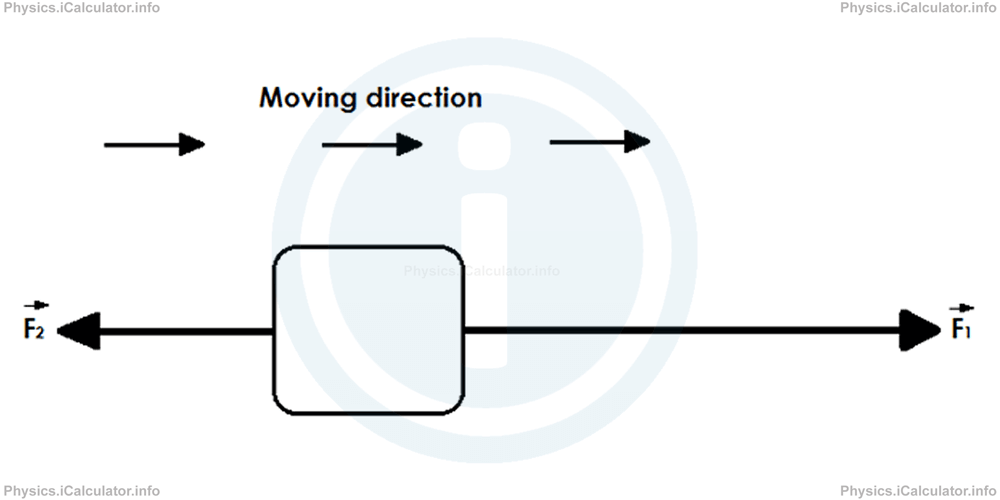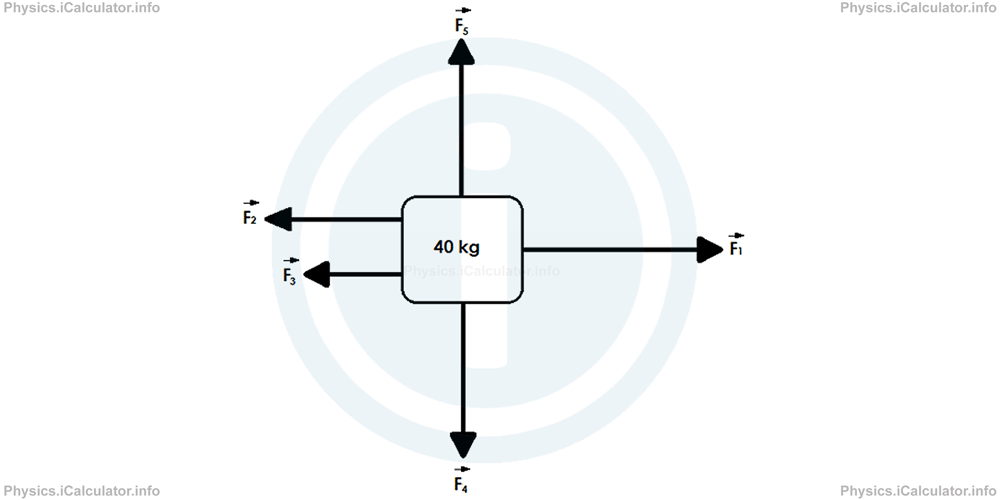Menu
Physics Lesson 4.6.1 - The Relationship between Force, Mass and Acceleration. Newton's Second Law of Motion
Please provide a rating, it takes seconds and helps us to keep this resource free for all to use
Welcome to our Physics lesson on The Relationship between Force, Mass and Acceleration. Newton's Second Law of Motion, this is the first lesson of our suite of physics lessons covering the topic of Newton's Second Law of Motion, you can find links to the other lessons within this tutorial and access additional physics learning resources below this lesson.
The Relationship between Force, Mass and Acceleration. Newton's Second Law of Motion
In the previous tutorial, "Newton's First Law of Motion. The Meaning of Inertia", we stated that heavy objects are more inert than light ones as they have a greater mass. It was explained that Inertia is a physical concept related to objects' tendency to preserve their previous state of motion. As a result, the objects move at constant velocity when the forces acting on them are balanced.
But what happens when forces acting at the same object are not balanced? Does the object still move at constant velocity?
The answer is NO. When forces are not balanced, the resultant force at the object is different from zero. As a result, the object will move in the direction of the resultant force as shown in the figure below.

The vector equation of resultant force in this case is:
However, since F⃗1 and F⃗2 have opposite directions, the scalar equation of the resultant force will be
As a result, the object will move in the direction of the resultant force (here, in the direction of the largest force, i.e. due right).
If the object was at rest, its initial velocity v⃗0 is zero. When it starts moving, the magnitude of velocity v⃗ is not zero anymore. As this process (making an object move) takes some time t, there will be an acceleration that is not zero, based on the equation (and definition) of acceleration. It is known that the equation of acceleration caused by this non-zero resultant force (as stated in the Physics tutorial "The Meaning of Acceleration. Constant and non-Constant Acceleration"), is
Greater the magnitude of the resultant force, greater the acceleration it causes at the object in which the forces act. Therefore, acceleration is (directly) proportional to the resultant of forces acting at the same object. Mathematically, we write this conclusion as
Equation 1
a⃗ ~ F⃗ROn the other hand, it is obvious that there is a relationship between the acceleration and mass. Thus, greater the object's mass (more inert an object is), more difficult is to make the object move. This means the most massive objects experience smaller acceleration as they cannot gain much velocity when a force (or a number of forces) acts on them. Therefore, acceleration is inversely proportional to the mass of object. Mathematically, this inverse proportionality is written as:
Equation 2
a⃗ ~ 1/mCombining the relations (1) and (2), we obtain the mathematical expression of the Newton's Second Law of Motion:
Equation 3
a⃗ = F⃗R/mIn words, the Newton's Second Law of Motion states that:
"The acceleration an object gains due to the action of a force (or the resultant of some forces) is directly proportional to the force itself and inversely proportional to the mass of the object."
Example 1
Five forces are acting at a 40 kg object as shown in the figure below.

The magnitudes of these acting forces are: F1 = 120 N, F2 = 70 N, F3 = 40 N, F4 = 100 N and F5 = 100 N. Calculate:
- The acceleration of the object and its direction
- The velocity of the object after 12 seconds if it starts moving from rest
- The displacement of the object during this interval
Solution 1
a. We have to calculate the resultant force acting at the object first, in order to find the acceleration later. Thus, from the figure we can see that the forces F4 and F5 cancel each other, as they are equal in magnitude and opposite in direction. Therefore, no resultant force exists in the up-down direction.
As for the left-right direction, we have:
The scalar representation of the above equation considering the forces direction is
= F1 - F2 - F3
Substituting the values, we obtain:
= 10N
The positive result for the resultant force means its direction is due right as it complies with the direction of the largest force.
Therefore, based on the Newton's Second Law, we have:
The acceleration is in the direction of the resultant force as when a vector (here the resultant force) is divided by a positive scalar (here the mass), the result is a new vector (the acceleration) whose direction is the same as the original vector. Therefore, the direction of acceleration is due right as well (this means the object speeds up due right).
b. Based on the results obtained at the part (a), we have:
Substituting the known values, we obtain
= 3 m/s
The displacement ∆x⃗ is calculated through the known kinematic equation
= 0 × 12 + 0.25 × 122/2
= 18m
As you see, there is a strong relationship between Kinematics and Dynamics when studying the motion of objects.
Remark! If the resultant force is negative, it mean that resistive forces are greater than the moving force. As a result, the acceleration will be negative as well. This causes a slowing down in the object's motion. As an example in this regard, we can consider a rolling ball along a horizontal surface. After throwing it, the moving force becomes zero as no force is pushing the ball anymore. Frictional force now is the only force acting on it. We know that frictional force has an opposite direction to the motion, so the resultant force is negative. This causes the ball to slow down and eventually stop.
You have reached the end of Physics lesson 4.6.1 The Relationship between Force, Mass and Acceleration. Newton's Second Law of Motion. There are 3 lessons in this physics tutorial covering Newton's Second Law of Motion, you can access all the lessons from this tutorial below.
More Newton's Second Law of Motion Lessons and Learning Resources
Whats next?
Enjoy the "The Relationship between Force, Mass and Acceleration. Newton's Second Law of Motion" physics lesson? People who liked the "Newton's Second Law of Motion lesson found the following resources useful:
- Force Feedback. Helps other - Leave a rating for this force (see below)
- Dynamics Physics tutorial: Newton's Second Law of Motion. Read the Newton's Second Law of Motion physics tutorial and build your physics knowledge of Dynamics
- Dynamics Revision Notes: Newton's Second Law of Motion. Print the notes so you can revise the key points covered in the physics tutorial for Newton's Second Law of Motion
- Dynamics Practice Questions: Newton's Second Law of Motion. Test and improve your knowledge of Newton's Second Law of Motion with example questins and answers
- Check your calculations for Dynamics questions with our excellent Dynamics calculators which contain full equations and calculations clearly displayed line by line. See the Dynamics Calculators by iCalculator™ below.
- Continuing learning dynamics - read our next physics tutorial: Newton's Third Law of Motion
Help others Learning Physics just like you
Please provide a rating, it takes seconds and helps us to keep this resource free for all to use
We hope you found this Physics lesson "Newton's Second Law of Motion" useful. If you did it would be great if you could spare the time to rate this physics lesson (simply click on the number of stars that match your assessment of this physics learning aide) and/or share on social media, this helps us identify popular tutorials and calculators and expand our free learning resources to support our users around the world have free access to expand their knowledge of physics and other disciplines.